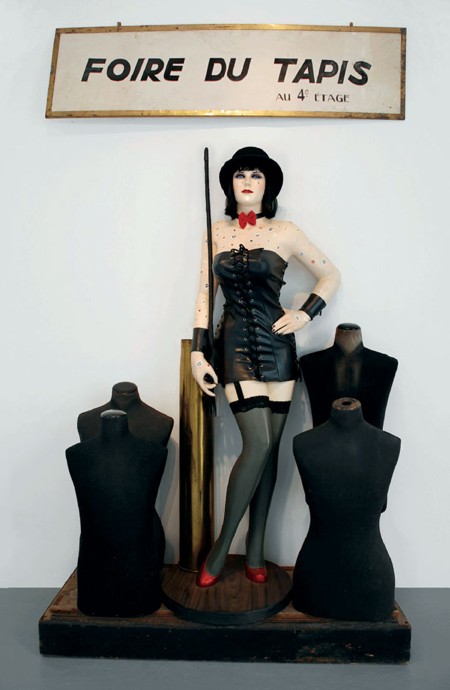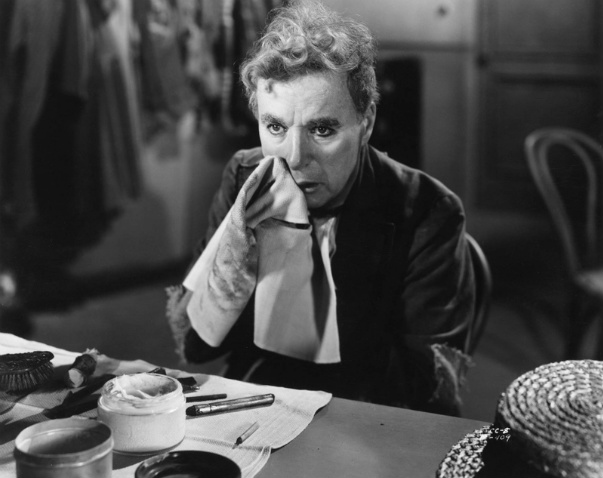When you’re not by my side
The world’s in two, and I’m a foolWhen you’re not in my sight
Then everything, just fades from viewThe mystery of love belongs to you
The mystery of love belongs to youTell me, have you changed your mind?
Am I a fool, because of you?Tell me, do we still have time?
To make this wrong somehow be rightThe mystery of love belongs to you
The mystery of love belongs to youShow me sweetness, show me summer skies
Show me how to make this wrong seem right
Show me laughter in your pale blue eyes
Tell me, tell me have you changed your mind? ( Mystery of Love. P.J. Harvey, Marianne Faithfull)
“Barthes was against doxa, conformism, the status quo. He set no great store by his own work, which was a stick to beat the present and make it more reflective. In writing a text, any text, the writer himself comes undone, remaining only as devices within the text, appearing perhaps in the third person as he does in Roland Barthes by Roland Barthes (1975). In his own way, Barthes was a moralist, a hedonistic materialist, arguing that we must surrender our individuality whenever we enter language, which cannot belong to us.”

"The voyage of the object through postmodern philosophy, from Jean Baudrillard and Roland Barthes’ semiotics through to the more recent contributions of the rising Bruno Latour and his Egyptian-stamped epigone Graham Harman, has been accompanied at every stage of its journey by a series of trusty artistic companions. Marcel Duchamp – whose work only started to become known outside of art circles in the late 1950s – was the first to offer an interpretation of the Sancho Panza role. After him, came Marcel Broodthaers, followed by Fischli and Weiss. The work of the Belgian artist Guillaume Bijl is located along this same highway. Bijl delights in objects, their oddities and animisms, their hauntings and quirks, their strange correspondences. "
Roland Barthes, who died in 1981, was an eminent French historian, writer and philosopher, one of the chief formulators of semiology, the study of forms by interpreting the societal role of signs and symbols. …
In 1964 Roland Barthes ( 1915-1981) developed his ideas about semiotics in a short treatise translated as “The Elements of Semiology”. In 1967, after working on the project for nearly ten years, he published “Systéme de la Mode”, a study of the “language” of women’s fashions. Although both these books are worth reading for definitions and insights, neither is wholly successful. “Eléments de Sémiologie” is marred by a lack of familiarity with the work of American linguists of the Chomsky generation. “Systéme de la Mode” suffers from being focused not on clothes directly but on what fashion
ers say about clothes, which can be pretty boring, self-congratulating and narcissistic.
"The irony is, in drawing attention to semiotics and our power to alter what, and how, things signify, Barthes didn't necessarily educate the masses as to their own consumerist susceptibility, but in fact alerted new generations of marketing and advertising executives to their power to influence the channels of signification. (Mythologies could almost run as a companion piece to the TV show Mad Men, which considers the ethically questionable myth-makers of the ad world in the advertising boom-time of the early 60s)."
In the meantime he was steadily turning out essays on literature, some of which were collected in 1963 in “Sur Racine” and in 1964 in “Essais critiques” To these volumes and the mysteriously titled S/Z of 1970, all culminating in his “Camera Lucida” of 1981.
“S/Z (1970) was based on an untypical novella by Balzac: ‘Sarrasine’. Barthes chopped Balzac’s text into 561 units and then dissolved the story further by treating it under five codes: actional, hermeneutic, semic, symbolic and referential. The last code, the references the story makes to ‘reality out there’, was the most controversial. Barthes argued that this ‘reality’ was only the glib commonplaces and accepted wisdom of Balzac’s own time: not insights but stereotypes. As a Structuralist, he suggested that there was no author but rules, no expression but only technique.”
The story of S/Z concerns the unfortunate love of a duped eighteenth-century french sculptor , Sarrasine, for a beautiful Italian soprano, Zambinella , who turns out to be a “castrato” dressed as a woman. The title of the critical essay, Barthes explains, separates the initials of these personages with a diagonal because “S” and “Z” are the same letter, or at least mirror images; because in Zambinella Sarrasine contemplates his own unmanning ; and because the diagonal is used by linguists to mean “versus”

"...The same year, he praised Charlie Chaplin as a Brechtian artist, showing “the public its blindness by presenting at the same time a man who is blind and what is in front of him,” that is, “a kind of primitive proletarian, still outside Revolution” in MODERN TIMES . Twenty-five years later, in a regular column he was writing for Le Nouvel Observateur, he expressed his fascination with an image from LIMELIGHT— Chaplin applying makeup in front of a mirror — as “literally a metamorphosis, such as only mythology and entomology could speak about it.”
The first thing that strikes the reader is the wide range of Barthe’s interests. Everything from Sade to Proust to Baudelaire, Voltaire, Baudelaire, Kafka and Brecht among many others. Running through the various essays, however, are certain recurring approaches that pull everything together and exlpain why Barthes was known in France as the leading representative of the postwar “nouvelle critique”. This literary movement, although not at all organized, is coherent enough to be described as an updated French version of the New Criticism that arose in England and America between the world wars.
Like its foreign predecessor, “la nouvelle critique” stresses the use of nonliterary disciplines, such as the social sciences in the study of literature; that in the study of literature insists on the necessity of a close reading of the text, often considering a work as isolated from the context of its creation, and at time unearths levels of supposed significance that can disconcert a plain man who assumes that words mean what they say.
In “Sur Racine” for example, Barthes reduces the tragic Racinean universe and its population to a structuralist , existentialist, and Freudian mechanism that churns out systematic oppositions such as shade/light, silence/language, virility/femininity, authority/submission and throbs with oedipal conflict. He adds to this analytical tour de force a flat , provocative statement that he is making “no reference” whatever to possible biographical and historical sources for Racine’s work. “Freud, who was keenly aware of the trap that literature sets for the psychoanalytically inclined reader- a trap into which it is ironically, the most talented who are the most likely to fall- remained constantly sensitive to this point, in contrast to many of his epigones…”

"Nor was this his only problem with movies. As he went on to say in Roland Barthes, “Constraints of representation (analogous to the obligatory rubrics of language) make it necessary to receive everything: of a man walking in the snow, even before he signifies, everything is given to me; in writing, on the contrary, I am not obliged to see how the hero wears his nails — but if it wants to, the Text describes, and with what force, Hölderlin’s filthy talons.” The trouble, in short, was that film — that “festival of affects,” as Barthes called it — offered the spectator too much, yet not enough."
“I read Barthes’ text as a countertext to Freud; at the same time I read both of their late texts as love stories, as stories of loss which are transformed into what are also stories of writing. Our lives can be broken by the loss through death of someone we loved. That is true and I would be foolish to deny it. But they can also be impelled forward by such a loss… Freud in old age continued his investigation of mourning in a creative way, and Barthe continued to radically invent a writing self. ” ( Kathleen Woodward )
“The Freudian framework would seem to be more receptive to some of the contradictory ideas involved in the subliminal. After all, it has a theory of the subconscious and its relationship with conscious aspects of human existence. Given a layman’s knowledge of Freud and the definition of subliminal already described, myth has the potential to shape them together as one coherent discourse. In taking the first steps in articulating the discourse of subliminal persuasion, it is useful to let the imagination take over and see what happens when these ideas are combined. According to Barthes (1972), this is the essence of myth. Just as language selects and combines preexisting linguistic elements to form unique sentences, so myth selects and combines preexisting semiological systems to form a new and unique discourse.

"Writing poetically about the face of Greta Garbo — that mythic object par excellence — the same year, Barthes found that it represented a “fragile moment when the cinema is about to draw an existential from an essential beauty, when the archetype leans towards the fascination of moral faces, when the clarity of the flesh as essence yields its place to a lyricism of Woman.” Comparing her face to the more individualized face of Audrey Hepburn, he concluded that, “As a language, Garbo’s singularity was of the order of the concept, that of Audrey Hepburn is of the order of the substance. The face of Garbo is an Idea, that of Hepburn, an Event.” The preceding translation is by Annette Lavers."
To do this, however, it is necessary that one suspends one’s critical faculties for the moment and pardon the apparent sloppy treatment of these discourses. The intention is to articulate the myth in its own terms rather than in the discourse of the objective observer. In the Freudian world view, behavior is the result of unconscious mental forces, inner drives fueled by desire, fear and the libido. The definition of a “subliminal message” describes an entity which can bypass the threshold of consciousness. By definition, it follows that this message is being “received” in this subconscious region of the mind. ( Gary P. Radford )

" Such textual anchorages can have a more subversive function, however. For instance, in the 1970s, the photographer Victor Burgin exhibited posters in the form of images appropriated from print advertisements together with his own printed text which ran counter to the intended meaning of the original ads."
In the best French tradition of the exchange of insults, Barthe gave as good as he got. He irritated French literary scholars to no end, in particular those who like to trace sources and influences on a writer’s work. Barthes was accused of playing fast and loose with facts, employing jargon, yielding to sexual obsessions, giving classics a modern ideological slant, and treating language as something halfway between molasses and rubber. Raymond Picard said, ” Barthes is like a man who might be interested in women but who , by a strange perversion, can appreciate them only by examining them with X rays.”

Language is a skin: I rub my language against the other. It is as if I had words instead of fingers, or fingers at the tip of my words. My language trembles with desire. Roland Barthes, "Talking," A Lover's Discourse (1977, trans. 1978) In a way, using the body as a (art/communication/symbolic) medium is the ultimate hybridity: since we often theorize media and art as connected to, or extensions of the body(McLuhan), what happens when bodies are used as the material or substance of the art work or message? It seems that bodies are all over-coded (or "over-determined" as theorists might say) in any representation today, considering our inherited and accumulated history of representation, and the current semiotic nexus that already decides in advance what a body means.
There were other reasons to be irked by Barthes as well. His harping attacks on the wickedness of the bourgeoisie could be tiresome, largely because he was so vague about identifying these scoundrels that he leaves you with the suspicion that, like Sartre’s hell, they are just “the others,” the non Barthesian people. Also, his puncturing of “myths” could imply, in a rather uncomplimentary fashion, that he assumes you were taken in before he came along. However, long before your complaints become a final exasperation, you are likely to be appeased by his intelligence and also by his pure enthusiasm for signs and language as such.
“Indeed, looking at Mythologies through the lens of contemporary culture, it is depressingly obvious that Barthes’ theories, in teaching society about the way it controls its own meanings, actually enhanced and inspired the very world of advertising and marketing that he sought to question and warn us against. Fifty years on, Mythologies hasn’t been superseded, it’s been implemented.”

"... the messages, which the photo connotes, are most important and interesting to Barthes’ semiotic theory. As mentioned earlier there are six connotative procedures that are used to amplify, enhance, and magnify the cultural messages within the photo. As it appears, trick effects (fake photos or digital editing), pose (the posture and arrangement of people), syntax (arrangement of photos in a series), and aestheticism (imitation of artistic styles) are not utilized in this photo (R.T. Craig, lecture, October 4th, 2007). However, the connotative procedure of objects (the placement of objects) is used in this photo to intensify the connotative messages. For example, the Statue of Liberty is strategically placed in front of the collapsed towers as a symbol of freedom, pride, resilience and strength. However to read this connotative sign of the image requires a sort of knowledge of the audience. The audience must have a “cognitive” knowledge to recognize the Statue of Liberty and its symbolism of American freedom. In addition the sign requires an ideological and ethical significance producing the belief that the form of American life is the correct and virtuous one. Barthes most accurately states this significance of object placement as follows, “The interest lies in the fact that the objects are accepted inducers of associations of ideas” (Barthes, 1977). Thus, the Statue of Liberty associates viewers with freedom. Secondly, Paul Watson uses the photogenia, or technical aspects of photo lighting, exposure and printing in the above image. The foreground of the image (the Statue of Liberty) is very bright and well light with a vibrancy of color compared to the dreary darkness of the background. This connotative emphasis produces a message that socially categorizes the strength and will power of American’s to overcome the devastation of the attacks. As Barthes states, the photograph allows the photographer to conceal elusively the preparation to which he subjects the scene to be recorded” (Barthes, 1977). In this case it happens to be the Statue of Liberty."
Ultimately with Barthes, it can be argued that only a person who is sensitive to signifiers as signifiers is likely to see through a modern mythmaker, for in fact the latter, in his own iniquitous way, is a connoisseur of media as such. The sly meaning, or insinuation, in a myth arises not so much from a “content”, as from an illicit manipulation of a “content” as a mere signifier. In a sense, you have to “empty” the apparatus in order to perceive how it works, and if you don’t “empty” it you are almost certain to be hooked by it. Hence, there is only a seeming paradox in saying that Barthes would not be the ardent moralist he is if he were not also an ardent formalist.
Inaugurating the chair of Literary Semiology at the Collège de France in the late 1970s, Barthes reminded his audience that:
“Semiology, so far as I am concerned, started from a strictly emotional impulse. It seemed to me (around 1954) that a science of signs might stimulate social criticism, and that Sartre, Brecht, and Saussure could concur in the project. It was a question, in short, of understanding (or of describing) how a society produces stereotypes, i.e., triumphs of artifice, which it then consumes as innate meanings, i.e., triumphs of nature. Semiology (my semiology, at least) is generated by an intolerance of this mixture of bad faith and good conscience which characterizes the general morality, and which Brecht, in his attack upon it, called the Great Habit.”





 COMMENTS
COMMENTS